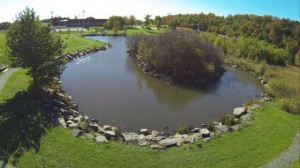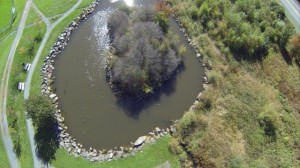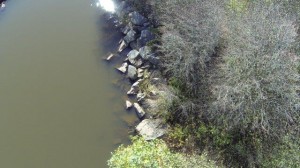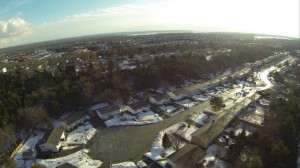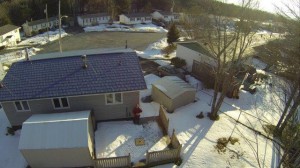(Note: I posted this blog on June 28, 2014 and updated it since, most recently on October 30, 2020. The purpose was to help counsel, the judicial system, and insurance claims managers and consultants understand how the standard of care is determined. To help you gain some appreciation of the technical issues in the stepped process that are understood by an expert but not so well by others.
Also, to draw attention to how the assessment can at times be easy and inexpensive and at other times quite difficult. This is illustrated with two brief case histories.
The following is based on the literature in the References, particularly Refs 3, 4 and 7 and my engineering experience in eastern, western, and northern Canada, and overseas. The literature emphasizes the process as it applies to professional people. I have extended it to include other specialties.
I updated the blog October, 2017 to include a list of questions that should be answered when assessing the standard of care. I’ve also noted the specific importance that is assigned to the practitioner’s application of judgement, diligence and the elements of care. The questions have been taken from Chapter 3, The Standard of Care, in the Guidelines for Forensic Engineering Practice, 2012, Ref. 7 and from Refs 8 and 9.
I updated the blog again on October 30, 2020 to note that some areas where failures and accidents occur have not adopted the National Building Code of Canada. The Code is a document relevant to assessing the standard of care for incidents in buildings as distinct from other civil engineering structures)
***
Often when a building or a civil engineering structure fails, or a component is defective in some way, the performance of the parties involved is called into question. Did they exhibit the degree of care that a reasonable person should exercise?
Civil engineering structures can be anything built by man. Also, anything in the natural environment that affects people, like floods and landslides.
Parties whose performance might be questioned
The parties involved could be anyone associated with:
- The exact technical cause of the failure or accident – the failure mechanism
- And/or the process cause that led to the failure or accident – the procedural cause of the failure or accident, the circumstances that led to the occurrence of the failure mechanism (Ref. 1)
For example, any of those parties in the process from the original owner of the building or civil engineering structure to the workers who maintained it.
And all those specialties and trades in between. Like the architects, the design and construction engineers, construction and building trades’ workers, material and product manufacturers and suppliers, and product and equipment installers.
It’s also the case – questioning the performance of the parties involved – when an accident occurs causing property damage, personal injury, or death.
“Standard of care” questions
If that is the question – the performance of the people involved – there is often a need for an expert to do two things:
- Determine and describe the skill possessed by normally competent practitioners involved in the technical cause of the failure and/or the process leading to the failure, and,
- Develop an opinion – if requested by counsel – as to whether the defendant party conformed to that level of skill
These are “standard of care” questions.
1. The expert determines and describes the standard of care existing at the time the structure and/or its components were designed, built or maintained, or the accident occurred. He or she determines what a reasonable person would do in similar circumstances.
2. Then the judicial system uses the description of the standard in assessing the actions of those associated with the structure or the accident scene. The judicial system may consider an expert’s opinion on whether or not the parties involved deviated from the standard.
Experts are human
There are three problems with this approach of using an expert to determine the standard of care and whether or not the standard was breached:
- Being human, experts are susceptible to applying personal standards. They risk raising the standard of care by relying on their personal experience and practice.
- Litigation is retrospective. Usually an expert must determine what the standard of care was in the past, not what it is at present. If he did not practice during the time period in question, he would have to determine the standard by interviewing others and reviewing documents. Also, if there were a number of different procedures for getting something done at the time it would be necessary to determine the nature of each, and which one would have been seen as a standard. Again by interviewing others and reviewing documents. This is difficult and time consuming and involves a lot of e-mail, telephone, document, and leg work.
- There are unique services, and some quite ordinary, for which no standard exists.
Experts retained to determine the standard of care must solve these problems.
Steps in determining the standard of care
Although a protocol for answering the two “standard of care” questions above in every case does not exist, the following steps will at least assist the expert.
They will also assist counsel and the judicial system acquire some understanding of the comprehensive nature of the process. Also the technical issues involved in determining the standard of care.
Such a determination can be quite easy and straightforward in some cases, and quite difficult in others. This affects costs as might be expected. This is illustrated by two case histories described below.
I developed the stepped process – by extending the one in Ref. 4 – to include workers in the various supply industries, the building trades, and maintenance, in addition to the professions. I found in researching the standard of care that much of the material concerned the performance of people in the professions. However, there are circumstances when the performance of people in other fields of endeavour is of interest.
Before the process begins, counsel will need to advise when the building, civil engineering structure, and/or component was built. He may also want to ask the expert for an opinion on whether or not the performance of those involved conformed to the standard of care:
Steps in the process
- Establish the time period involved.
- If there is reason to believe the standard is locality-specific, determine the applicable geographic locality.
- Determine the circumstances that relate to the failure or accident.
- Determine the technical cause of the failure or accident – the failure mechanism.
- Determine the process in developing the structure or component involved in the failure or accident – the procedural cause.
- Identify the professions, industries, and/or trades involved in the process and if they are well defined and understood as such.
- Do these things by interviewing a number of representatives in the different fields of practice. If there is variance, speak with more until you are satisfied you know the average. (Ref. 5)
- Review the contract, or any other documents that define the party’s scope of work and any limitations on their services.
- Perform a literature search to determine if the standard of care was documented in publications, manuals and guidelines, regulations, and/or codes. This literature should be known to representatives and workers in the professions, industries, or trades associated with the failure or accident.
- If the failure or accident occurred in a building, determine if the Building Code of Canada was in force at the time of the incident.
- Interview a number of professional, industrial, product, and trade representatives to determine a consensus standard of care. If there is variance, speak with more until you are satisfied you know the average.
- Compare the consensus standard, as modified by contract, circumstances, or other justifications, with the questioned performance during design, construction, and/or maintenance of the building, civil engineering structure, or component.
This stepped process is quite comprehensive. If followed it will assist the expert come to a clear understanding of the standard of care for a particular set of circumstances and enable the expert to describe it – answer the first of the two “standard of care” questions above.
It will also enable the expert to formulate an opinion as to whether or not the actions of the parties associated with the failure or accident conformed to the standard of care at the time – the second question.
Questions that should be answered in a stepped process for determining the standard of care
In going through a stepped process like the above to determine the standard of care the expert should make certain he or she answers the following questions. These are as published almost verbatim in Guidelines for Forensic Engineering Practice (Ref. 7). In a sense this is basically a stepped process separate from my own taken from the Guidelines:
- Does the expert have the degree of learning and skill ordinarily possessed by reputable professionals or workers, practicing or working in the same or similar locality, and under similar circumstances?
- Did the expert use the care and skill ordinarily used in like cases by reputable members of his or her profession or work practicing or working in the same or similar locality under similar circumstances?
- Did the expert use reasonable diligence?
- Did the expert use his or her best judgement?
- Did the expert do all that in an effort to accomplish the purpose for which he or she was retained?
To answer these questions, the following must also be determined:
- Who are “reputable professionals or workers”?
- What are “same or similar” localities and circumstances?
- What is “skill”?
- What is “care”?
- What are “like cases”?
- What learning and skill are “ordinarily possessed”?
- What care and skill is “ordinarily used”?
- What is “reasonable diligence”?
- What is “judgement”?
- What is the expert’s “best judgement”?
- What was the purpose for which the expert was retained?
“The standard of care is an assessment of the quality of care exercised by a practitioner, with specific importance assigned to the expert’s application of judgement, diligence, and the following five elements of the ethic of care, all of which are pertinent in engineering.”: (Refs 7, 8 and 9)
- Attentiveness: Caring about; noticing the need to care, or recognizing the need of others.
- Responsibility: Taking care; having more than an obligation, but a responsibility arising in part from one’s position or knowledge.
- Competency: Care giving; having the ability to carry out the caring act effectively and correctly.
- Responsiveness: Care receiving; being receptive to care, being aware of the care receiver’s perceptions.
- Integrity: Knowledge on the part of the caregiver of the situations, needs, and competencies of all the parties to the care interaction, including an assessment of needs in a social and political, as well as personal, context. (Refs 7, 8 and 9)
Workers in general, quite apart from those in the professions, must be assessed on their application of judgement, diligence and the five elements of the ethic of care.
The cost of the process
The cost of determining the standard of care can vary considerably. It depends on:
- The time period
- The location of the failure or accident
- The specialty, trade or profession of the person whose performance is questioned
- The number of documents to research
- The number of persons to interview
- Whether or not there is a well-defined process guiding development of the building or civil engineering structure, and it’s components, or associated with the elements in an accident
- Identifying the relevant parties in a poorly-defined process and how they are connected
- The existence of relevant codes, industry standards, and guidelines
The following two cases illustrate how cost and difficulty can vary:
1. Large, complex structure but easy and inexpensive assessment of the standard of care:
I assessed the standard for the catastrophic failure of a soil-steel bridge – a very large, corrugated steel culvert – that permanently disabled a woman.
The assessment was easy and inexpensive because the design and construction process was well defined. There were only two parties to interview: (1) The one design firm working in the area at the time and (2) The culvert manufacturer.
The assessment of the standard of care was easy even though it was a large, complex structure, the failure occurred about 10 years prior to my assessment, and the soil-steel bridge was designed and constructed about 35 years previously.
2. Small, simple component but difficult and expensive assessment:
Another assessment for a simple accident was difficult and expensive. This was because the industry and the process associated with development of the small component of the structure involved – a floor – was poorly defined and made up of 11 parties, with many persons to interview.
The relationship between the parties, and who was responsible for what, was not well defined. It was expensive even though a simple component was involved and the accident occurred quite recently.
References
- Nicastro, P.E. David E., ed., Failure Mechanisms in Building Construction, American Society of Civil Engineers (ASCE) 1997
- Black’s Law Dictionary, 4th pocket edition 2011
- Kardon, J. B. 2000, 2010 Chapter 7, Standard of Care in Forensic Structural Engineering Handbook, R. T. Ratay, Editor-in-Chief, McGraw-Hill, New York.
- Thompson, D. E. and Ashcraft, H. W. 2000, 2010 Chapter 9 Page 9.17 in Forensic Structural Engineering Handbook R. T. Ratay, Editor-in-Chief, McGraw-Hill, New York.
- Association of Soil and Foundation Engineers (ASFE) 1985 Expert: A Guide to Forensic Engineering and Service as an Expert Witness
- Mangraviti, Jr., James J., Babitsky, Steven, and Donovan, Nadine Nasser, How to Write an Expert Witness Report, SEAK, Inc., Falmouth, MA 2014
- Kardon, Joshua B., Editor, 2012 Chapter 3, The Standard of Care in American Society of Civil Engineers, Reston, Virginia
- Tronto, J. C. (1993), Moral Boundaries: A Political Argument for an Ethic of Care, Routeledge, New York.
- Kardon, J. B. (2005), The Concept of “Care” in Engineering. American Society of Civil Engineers, Journal of Performance of Constructed Facilities, Vol. 19, No. 3, pp. 256-260.
Posted by Eric E. Jorden, M.Sc., P.Eng. Consulting Professional Engineer, Forensic Engineer, Geotechnology Ltd., Halifax, Nova Scotia, Canada, June 28, 2014. Updated October 30, 2020 ejorden@eastlink.ca

